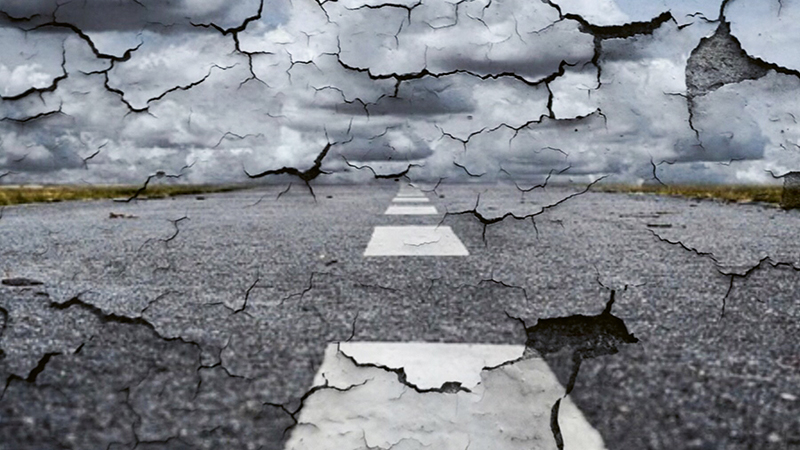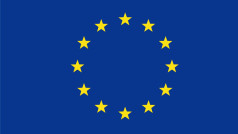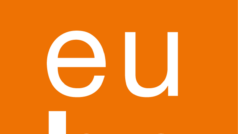The EU also bases its policies on the SDGs. Eurostat has analysed the extent to which the EU is on track to meet the 2030 targets. The results are rather sobering.
Sustainability goals have long played an important role in EU policy. The United Nations’ 2030 Agenda for Sustainable Development, with its 17 Sustainable Development Goals, has given new impetus to global efforts to achieve sustainable development. The sustainability goals were also at the heart of the von der Leyen Commission. With this report, Eurostat aims to show where the EU currently stands in relation to these goals.
No poverty
The first Sustainable Development Goal is not only to eradicate extreme poverty, but also to halve poverty in all its dimensions by 2030. The number of people at risk of poverty in the EU is to be reduced by at least 15 million by 2030, compared to 2019. At least 5 million of these people are children. However, considerable efforts are still needed to reach the 2030 target. Although the number had fallen by 2.9% in 2022 compared to 2017, there has been little change since 2019.
Zero hunger
The aim is to eradicate hunger and all forms of malnutrition. However, the EU faces the opposite problem, as more than half of the EU population is overweight and one in seven is obese. This is mainly due to unhealthy diets that are high in energy, fat, trans fats and saturated fats. Physical inactivity and sociological and genetic factors also play a role. Obesity is a major public health issue in the EU.
Sustainable agricultural production is a key element for ensuring a fair, healthy and environmentally friendly food supply. The European agricultural sector needs to become economically sustainable. An important indicator of this is labour productivity, which was 34.2% higher in 2023 than in 2015, and organic farming is on the rise across the EU. However, the pace of expansion needs to be stepped up to reach the 2030 target. The current share is around 9.9%, whereby the target for 2030 is 25%. The EU is on track to meet its targets for reducing the use of pesticides and the sale of antimicrobials for use on animals.
In 2022, the agriculture sector accounted for just under 11% of total greenhouse gas emissions in the EU. Since 2017, emissions caused by agriculture have been falling much more slowly than overall emissions.
Good health and well-being
In the EU, life expectancy has continued to rise in recent decades, although the rate of increase has slowed recently, partly due to the pandemic. However, life expectancy alone does not indicate whether people are living healthy lives.
The pandemic has also had a significant impact on mortality rates in Member States, with people over 60 and those from disadvantaged groups particularly affected. Between January 2020 and February 2023, 1.74 million more deaths were registered in the EU and EFTA regions than the average for the years 2016 to 2019.
Quality education
The SDGs state that by 2030, all children should have access to quality early childhood development, care, and education. They should also be able to complete free, equitable and quality primary and secondary education. According to Eurostat, participation in early childhood education and care has deteriorated since 2021. While a rate of 93.4% was reached in 2020, it dropped to 92.5% in 2021. The EU target is 96% by 2030.
Another target is to reduce the share of early school leavers to below 9% by 2030. This rate has been falling steadily since 2002 and stood at 9.5% in 2023. The target is therefore likely to be met. In addition, the share of people with tertiary education has increased significantly since 2002. The target for 2030 is 45% and already stood at 43.1% in 2023.
Basic digital skills are also becoming more important. Here, the proportion of 16-74 year olds with at least basic digital skills is targeted to rise to 80% by 2030. In 2023, however, the proportion was only 55.6%.
Gender equality
Ensuring high employment rates for both men and women is one of the EU’s main objectives. However, there are still large differences in the rates for men and women, and by 2030 the gender employment gap needs to be at least halved compared to 2019. Although women are better educated than men in most EU countries, they are still paid less on average. Traditional gender roles, a lack of support for both women and men to combine care duties with work, as well as political and corporate cultures are some of the reasons why women are under-represented when it comes to decision-making. Promoting gender equality in this area is one of the EU’s priorities for achieving gender equality overall.
Clean water and sanitation
As a vital resource, water is considered a public good in the EU. The indicators chosen to monitor sanitation are the proportion of the population without a bath, shower, or indoor flushing toilet in the household and the proportion connected to at least one wastewater treatment plant. The proportion of the population without a bath, shower, or indoor flushing toilet at home fell from 2.2% in 2015 to 1.5% in 2020. The data also show that the proportion of the EU population connected to a secondary wastewater treatment system has increased steadily since 2000 and reached 80.9% in 2021.
Almost every household in the EU had basic sanitation in 2020 and most countries reported that less than 1% of their population still lived in households without a flushing toilet, a bath or a shower. However, in some countries the proportion remains relatively high.
Although the nutrient pollution of European waters has decreased since the 1990s, it is still the main reason why 28% of surface water bodies are not of good quality.
Affordable and clean energy
The EU aims to reduce its total energy consumption by at least 11.7% by 2030 compared to the Reference Scenario for 2020. This means that in absolute terms, the EU should not consume more than 992.5 million tonnes of oil equivalent (toe) of primary energy and 763 million tonnes of oil equivalent of final energy by 2030. Primary energy consumption has been generally declining since 2007 and amounted to 1,257.1 Mtoe in 2022, a reduction of 15.6% over the last 15 years, while final energy consumption decreased by 8.6% to 940.5 Mtoe over the same period.
The difference between the decline in primary and final energy consumption is mainly due to more efficient energy production and the switch to renewable energy sources. However, further improvements in energy efficiency and consumption patterns are needed if the EU is to meet its two energy consumption targets for 2030. Recent developments also point to a decoupling of economic growth from energy consumption. The share of renewable energy in gross final energy consumption is projected to increase to 42.5% by 2030. In 2022, the share totalled 23%.
However, to reach the 2030 target, efforts will have to be stepped up in the coming years.
Decent work and economic growth
Gross domestic product in the EU grew steadily by 2% per year between 2014 and 2019. After the pandemic-related dip, growth resumed in 2022 and annual growth averaged 0.9% between 2018 and 2023. Growth of 1.0% and 1.6% is expected for 2024 and 2025 respectively. At the same time, however, the EU’s material footprint has also risen. After a dip due to the financial crisis in 2008, there was an increase of 7.6% between 2015 and 2019. And even after the pandemic, there was another significant rise. At 6.67 billion tonnes, in 2022 it reached its highest level since 2012. The EU’s material footprint is well above the global average and exceeds sustainable levels of resource extraction.
By 2030, the EU aims to reach an employment rate of 78% for the 20-64 age group. A historic high of 75.3% was recorded in 2023. However, the target is expected to be achieved by 2030. In 2023, the unemployment rate reached its lowest level since 2009 at 6.1%, while long-term unemployment dropped to an all-time low of 2.1% in 2023.
Industry, innovation and infrastructure
The industrial sector accounts for more than 20% of the European economy and employs around 35 million people, but industry is also a major source of pollution, although significant progress has been made in recent years in terms of emissions.
Environmental products and services make a significant contribution to the EU’s gross value added, rising from 1.8% in 2006 to 2.5% in 2021, growing faster than other sectors and employing more than 5.2 million people in 2021.
However, the share of buses and trains in total transport dropped significantly in 2020 and did not really recover in 2021. Before the pandemic the share was relatively stable at 17.6%, but fell to 12.9% in 2020, with only a slight increase to 13.7% in 2021.
The share of railways and inland waterways has fallen continuously since 2012 and reached its absolute low in 2022 with a share of 22.2%.
Reduced inequalities
The income gap between high-income and low-income households has narrowed in recent years, as measured by the difference between the 20% with the highest and the 20% with the lowest disposable income. The ratio fell from 5.22 in 2013 to 4.89 in 2019. The poverty gap between urban and rural areas has also shrunk.
Sustainable cities and communities
The quality of life has improved steadily since 2010, and noise pollution and crime have both fallen. However, the slow but steady increase in land sealing is problematic. In 2018, 2.7% of the total land area was sealed.
The EU is also at risk of failing to meet its municipal waste recycling target. In 2022, 229,482 tonnes were generated, equivalent to 513 kilograms per capita. The amount increased by around 3% between 2017 and 2022. Although the recycling rate rose from 27.3 to 48.6% between 2000 and 2022, the annual growth rate since 2017 is only 2.3 percentage points.
Responsible consumption and production
The EU’s material footprint has continued to grow over the last decade and reached 6.67 billion tonnes in 2022, requiring further action to meet the Green Deal targets. The consumption footprint exceeds planetary boundaries by a factor of 3.4 and the 2022 figure marked a historic high. Imports accounted for 22.4% of direct material use in 2022. The share was particularly high for fossil fuels (69.7%) and metal ores (51.5%), whereby the imported share of non-metallic minerals was only 3%.
Resource productivity, on the other hand, has increased. In 2022, the value of resources produced was 4% higher than in 2017. Energy productivity also rose significantly.
A total of 2.2 billion tonnes of waste was generated in the EU in 2020. Mineral waste from the construction and mining sectors accounted for almost two thirds of this amount. Moreover, the EU is not making progress in terms of recycling rates, which increased from 8.9 to 11.5% between 2007 and 2022. Since 2016, however, the figure has stagnated between 11.3 and 11.6%. Considerable efforts are still needed to reach the target of 23.2%.
Climate action
The EU aims to be climate-neutral by 2050 and has set itself an interim target of reducing greenhouse gas emissions by at least 55% by 2030 compared to 1990 levels. The EU Commission has now proposed a further interim target of 90% by 2040. Emissions fell by 31% between 1990 and 2022. The reduction will therefore have to be much faster if the target is to be met by 2030. However, net greenhouse gas emissions from land use and forestry also fell, by 22.2% between 2007 and 2022. This is partly due to a slowdown in net afforestation and an increase in tree mortality and harvesting. In 2022, net removals totalled 236.4 million tonnes of CO2eq, well below the target of 310 million tonnes to be met by 2030.
Life below water
SDG 15 is one of the key international targets dealing with biodiversity and ecosystems. In the EU, this target ensures that the health and functioning of terrestrial ecosystems and the provision of ecosystem services remain a priority. This is especially important in the face of global trends such as population growth, accelerated urbanisation, and increasing demand for natural resources. It also addresses the impacts of climate change. The monitoring of SDG 15 in the EU context focuses on trends in the condition of ecosystems, land degradation and biodiversity. Over the five-year period under review, there have been several negative trends in the indicators analysed in the EU, resulting in an overall moderately negative score for SDG 15 as a whole. While the forest area in the EU has slightly increased, recent trends in pollutant concentrations in EU rivers have been mixed. Soil degradation continues, with land use and the impact of droughts increasing. Biodiversity indicators show a long-term and sustained decline in common bird species and meadow butterflies in the EU. In addition, the designation of protected areas on land has stalled, and the EU is not on track to meet its 2030 target.
Life on land
SDG 15 is one of the key international targets dealing with biodiversity and ecosystems. In the EU, this target ensures that the health and functioning of terrestrial ecosystems and the provision of ecosystem services remain a priority. This is especially in the face of global trends such as population growth, accelerated urbanisation, and increasing demand for natural resources. It also addresses the impacts of climate change. Monitoring of SDG 15 in the EU context focuses on trends in ecosystem condition, land degradation and biodiversity. Over the five-year period under review, there have been several negative trends in the indicators analysed in the EU, resulting in an overall moderately negative score for SDG 15 as a whole. While forest area in the EU has slightly increased, recent trends in pollutant concentrations in EU rivers have been mixed. Soil degradation continues, with land use and the impact of droughts increasing. Biodiversity indicators show a long-term and sustained decline in common bird species and meadow butterflies in the EU. In addition, the designation of protected areas on land has stalled, and the EU is not on track to meet its 2030 target.
Peace, justice and strong institutions
Peace and security are prerequisites for sustainable development. Peace, security, democracy, the rule of law and respect for fundamental rights are also core values of the EU. The monitoring of SDG 16 in the EU context focuses on personal safety, access to justice and trust in institutions in the EU. Progress towards SDG 16 is uneven in all these areas. While the number of deaths from homicide and robbery and the perceived level of crime, violence and vandalism has decreased significantly recently, the number of victims of human trafficking in the EU has increased. Public spending on justice has risen significantly and more than half of Europeans consider their justice system to be independent, although this proportion has dropped over the last five years. The perception of corruption in the EU has remained stable.
Partnerships for the goals
Partnership is at the heart of the EU and an overarching principle for achieving the SDGs within and beyond the EU’s borders. The monitoring of SDG 17 in the EU context focuses on global partnership, financial management and access to technology. Over the five-year period analysed, the EU’s progress in the area of global partnership has been mixed. On the one hand, imports from developing countries have increased, and the EU is on track to meet its Official Development Assistance (ODA) target, partly due to support from Ukraine. On the other hand, despite the increase in ODA, overall EU funding to developing countries has decreased. Furthermore, fiscal management in the EU remains a challenge, as evidenced by the declining share of environmental taxes in total tax revenues and the high level of gross public debt. Meanwhile, access to technology in the EU has improved, with a significant rise in the share of households with broadband internet access.
Overall, the report sees significant progress for the SDGs ‘Decent work and economic growth’ and ‘Reduced inequalities’. For the goals ‘Good health and well-being’, ‘Clean water and sanitation’, ‘Affordable and clean energy’ and ‘Life on land’, Eurostat sees a moderate movement away from the targets. For all other goals, there is moderate progress.








